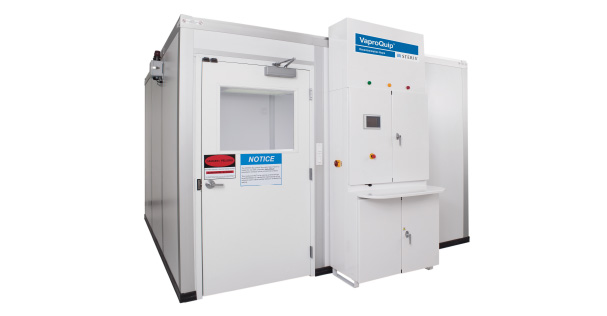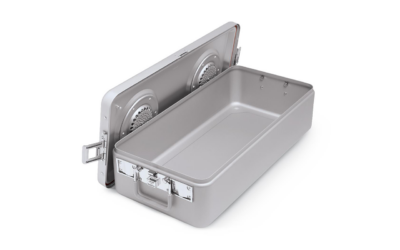By John Wallace
Aerosol and liquid products are common surface disinfectants and important parts of decontamination systems used by healthcare facilities throughout the world. The market has seen growth in recent years with the addition of new products.
A growing number of hospitals are also implementing ultraviolet (UV) disinfection systems as an additional measure when it comes to a decontamination system.
The application of UV radiation in the healthcare environment is limited to the destruction of airborne organisms or inactivation of microorganisms on surfaces, according to a 2008 report from the Centers for Disease Control and Prevention.
UV radiation inactivates microorganisms by destroying nucleic acids in bacteria and viruses. UV radiation has been shown to disinfect surfaces contaminated with viruses, bacteria and fungi, including superbugs such as methicillin-resistant Staphylococcus aureus (MRSA), Clostridium difficile (C. diff) and Carbapenem-Resistant Enterobacteriaceae (CRE).
Ultraviolet disinfection systems are typically portable units that can be easily transported from one room to another. The mobile aspect of these devices helps them become a part of a hospital’s cleaning and disinfection protocols along with aerosols and liquid products. The devices tend to be automated and run in cycles that are usually less than one hour.
The recent and continued focus on healthcare-acquired infections (HAIs) should push the growth of this market in both new and traditional aspects of disinfection and decontamination.
In January 2012, CMS began requiring hospitals to report surgical site infections (SSI) and denied reimbursement for the added cost of SSIs beginning in January 2013.
Hospital-acquired condition (HAC) data is also publicly available on the CMS website. The threats of added costs and increased public awareness have driven hospitals to dedicate more resources to infection prevention measures, such as multiple methods of room and surface disinfection.
According to a recent CDC report, ongoing efforts are needed to combat infections impacting hospital patients and more work is needed to improve patient safety. According to the CDC, approximately one in 25 U.S. patients contract at least one infection during the course of their hospital care and every day more than 200 Americans with HAIs will die during their hospital stay.
The CDC’s HAI Progress Report showed minimal decreases for hospital-onset C. diff infections and hospital-onset (MRSA) bloodstream infections.
Hospital cleanliness plays a role in the spread of HAIs, which are caused by microorganisms such as C. diff, MRSA, CRE and Acinetobacter baumannii. Some superbugs such as C. diff are showing resistance to chemical disinfectants, making them more difficult to eliminate.
Many patients, especially those on antibiotics, are susceptible to C. diff, which can live for up to five months on surfaces in a hospital. Others, like CRE, have developed a resistance to antibiotics, making them very difficult to treat.
Peer reviewed studies have proven that some new UV technologies are highly effective. A study published in the American Journal of Infection Control (August 2013) reported that Cooley Dickinson Hospital (an affiliate of Massachusetts General Hospital) experienced a 53 percent decrease in the rate of hospital-acquired C. diff infections after implementing a pulsed xenon UV light room disinfection system.
The global market for ultraviolet (UV) light disinfection equipment was worth $790 million in 2010, according to BBC research. This market is expected to reach a value of $1.6 billion in 2016. UV disinfection equipment is most popular in the wastewater treatment market, though BBC Research expects popularity to continue to increase in the healthcare market.









